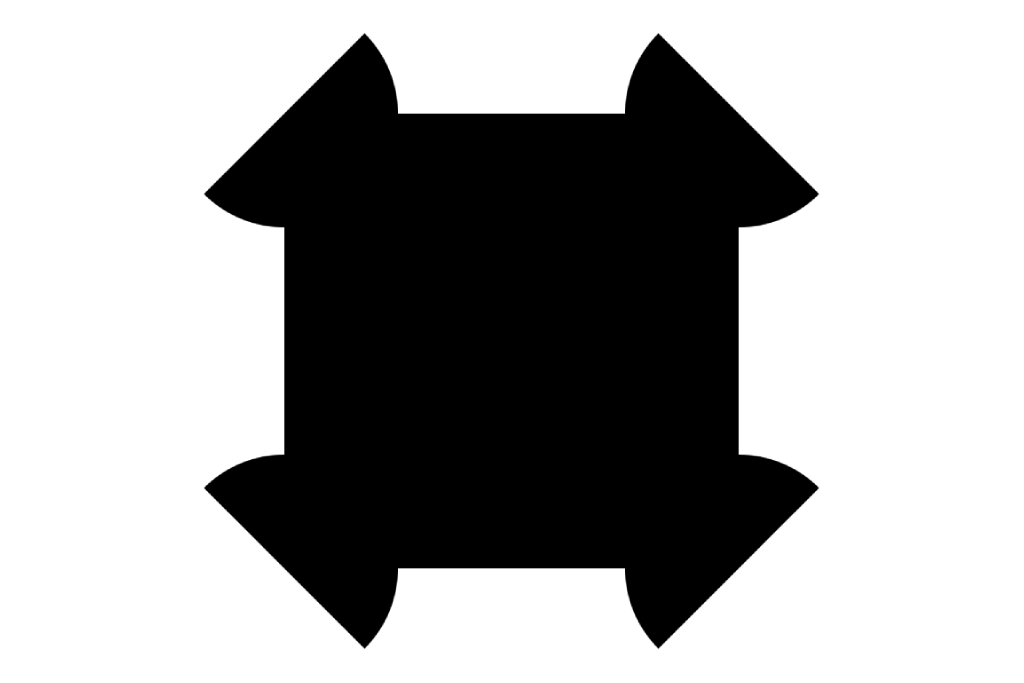People rarely behave without reason. When someone suddenly becomes tense, distant, outspoken, or emotional, it isn’t randomness. Something inside them is responding to pressure. Often something they can feel long before anyone else can see it. The Continuum exists to make those hidden pressures easier to understand, so conversations become clearer and less strained.
At the centre of the Continuum is a simple shape called the Four-Gate Glyph. It isn’t mystical and it isn’t designed to impress. It’s simply a practical way to understand the four forces that often shape how people respond when they feel stretched.
The shape has a square in the middle. That square stands for agency: the part of us that chooses, interprets, and acts with intention. Around it sit four curved shapes, each representing a different kind of behavioural pull:
- Stabilising: the effort to steady things, protect, anchor, or calm a situation
- Expanding: the urge to grow, move forward, or open new possibilities
- Withdrawing: the pull to step back, reflect, recover, or create needed space
- Commanding: the need to guide, take charge, or re-establish direction
These aren’t labels. They’re simply the four main ways people try to feel steady, safe, or effective when situations become too much. Everyone has all four. The question is never “Which one are you?” It’s “Which one is loudest right now?”
Often these influences interact in quiet pairs. Trying to stabilise something often clashes with the desire to grow it. Pulling back to recover can sit awkwardly alongside the instinct to take charge. We move between these tensions constantly.
This is where the glyph helps.
Imagine a team member who suddenly becomes sharp and controlling in a meeting. On the surface it looks impatient or hostile. But through the Continuum, something else becomes visible: their stabilising and protecting energies have surged because they feel the project slipping. Maybe they insist on sticking rigidly to the original plan, or dismiss new suggestions outright. It feels like irritation, but underneath it is fear. They’re trying to steady something that feels unstable. Once you see that, you can respond to the fear instead of the tone.
The glyph also helps with everyday noticing. You can begin to see the pattern by asking a simple question:
“Is this person’s energy moving inward to protect and recover, or outward to influence and change the situation?”
You don’t need precision. You just need direction. If someone feels tight, urgent, or decisive, Commanding may be active. If someone feels spacious, distant, or quiet, Withdrawing might be speaking.
One reason the glyph feels so non-judgemental is that no pattern is permanent. The four influences rise and fall with context. A person who retreats today might push forward tomorrow. Someone who stabilises one situation may take charge in another. The Continuum doesn’t define who someone is. It simply describes where they are in this moment, which is always shifting.
And this is why the centre matters. Agency is the part of us that steers. It integrates the four currents, tempers them, and ultimately decides how to respond. The glyph shows the currents, but the person is the one navigating them.
The purpose of the Four-Gate Glyph is simple:
- to help us see the human beneath the behaviour.
- to replace assumption with understanding.
- to make difficult moments gentler and easier to navigate.
It turns friction into clarity. And it reminds us that even when behaviour looks sharp or confusing, there’s almost always something understandable underneath.The glyph gives us the lens but the goal is always the same: to meet the person beneath the pressure.
